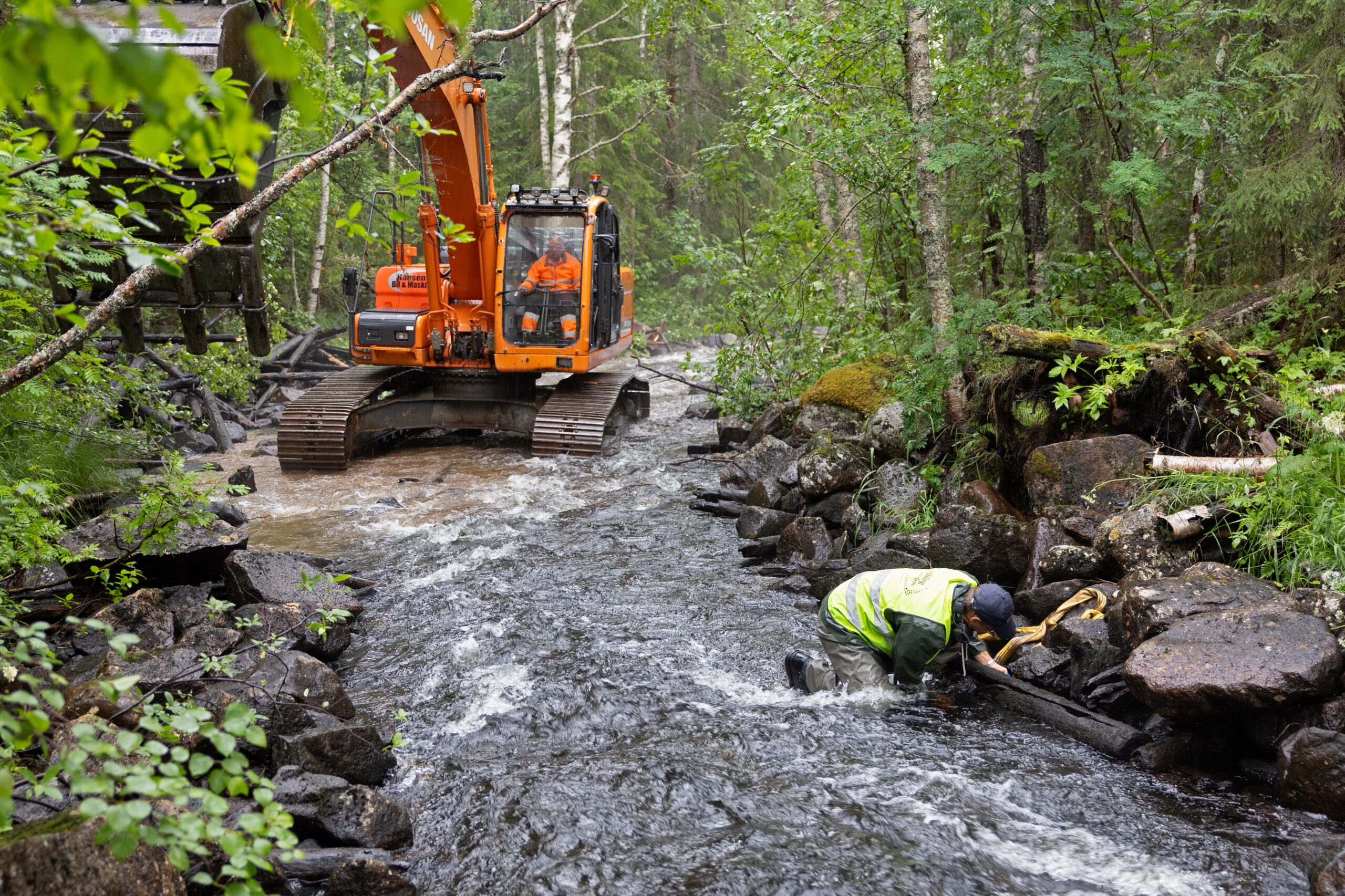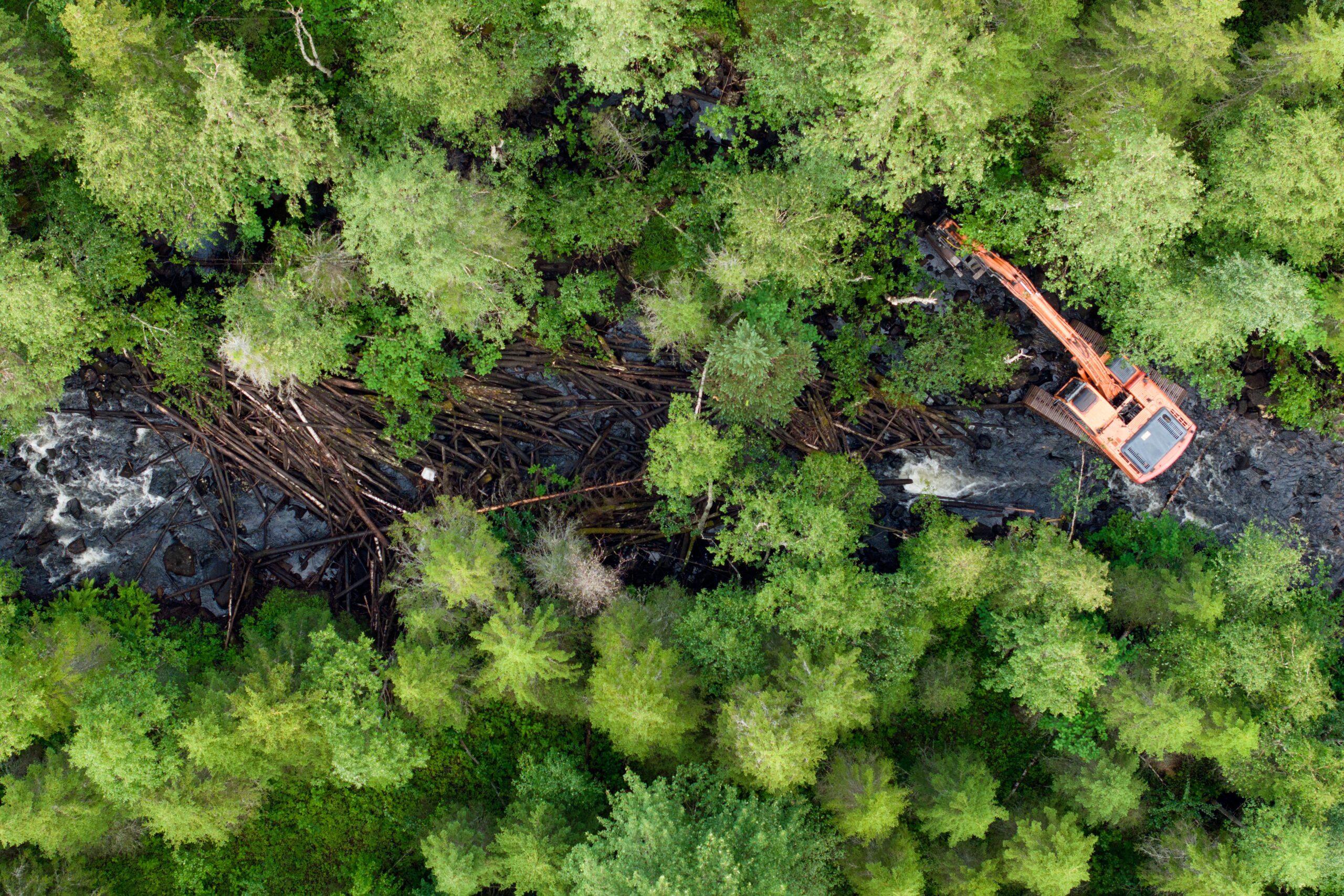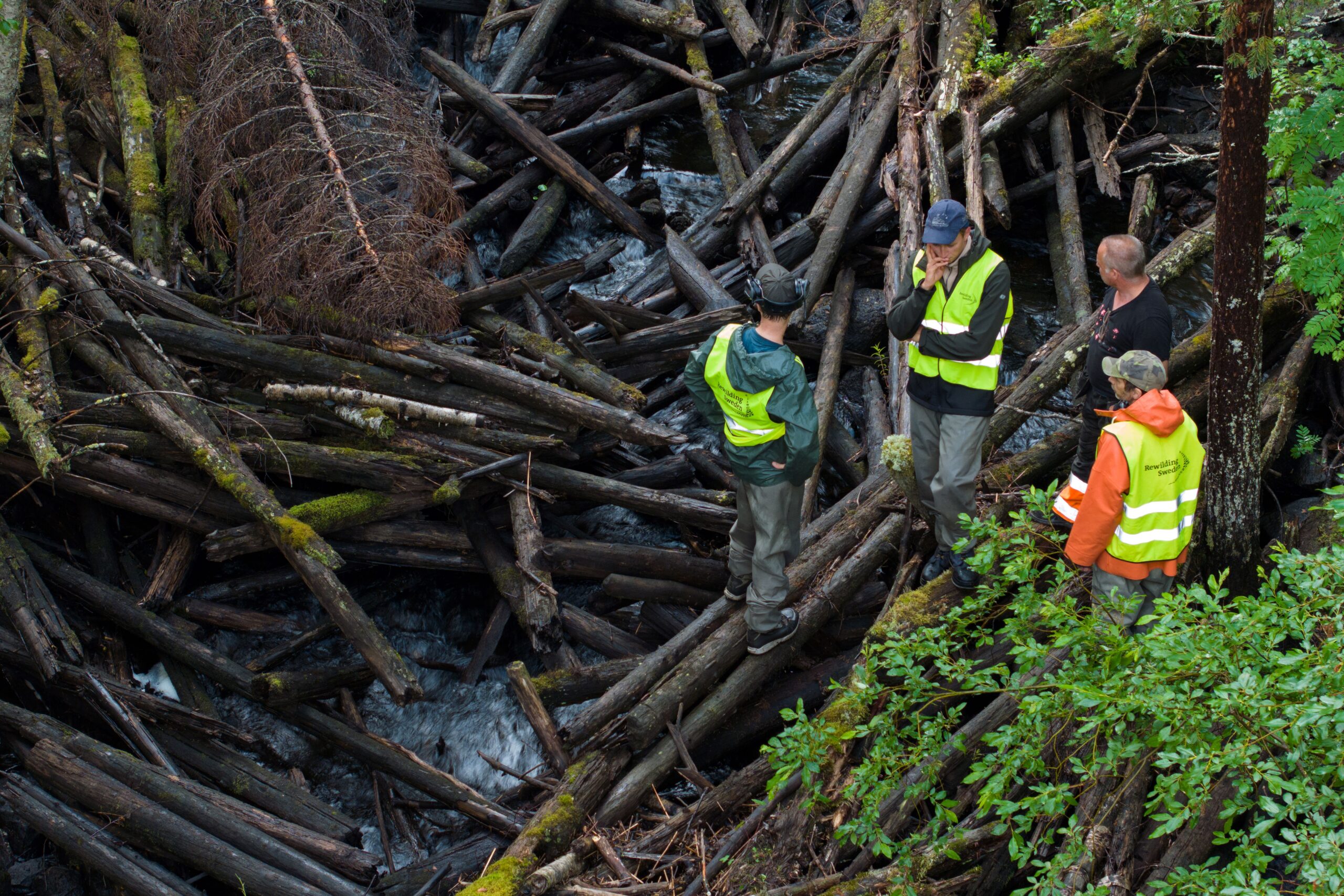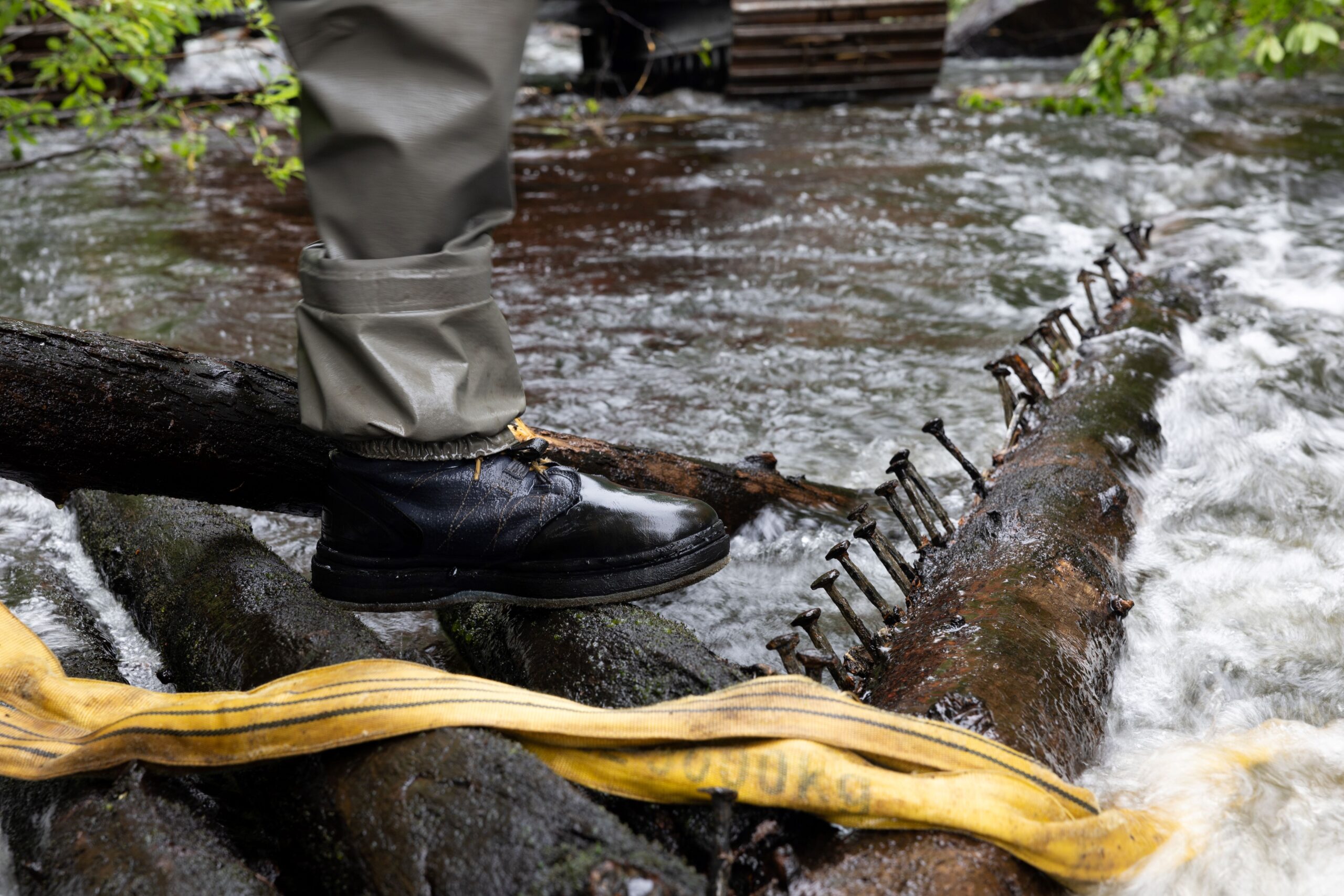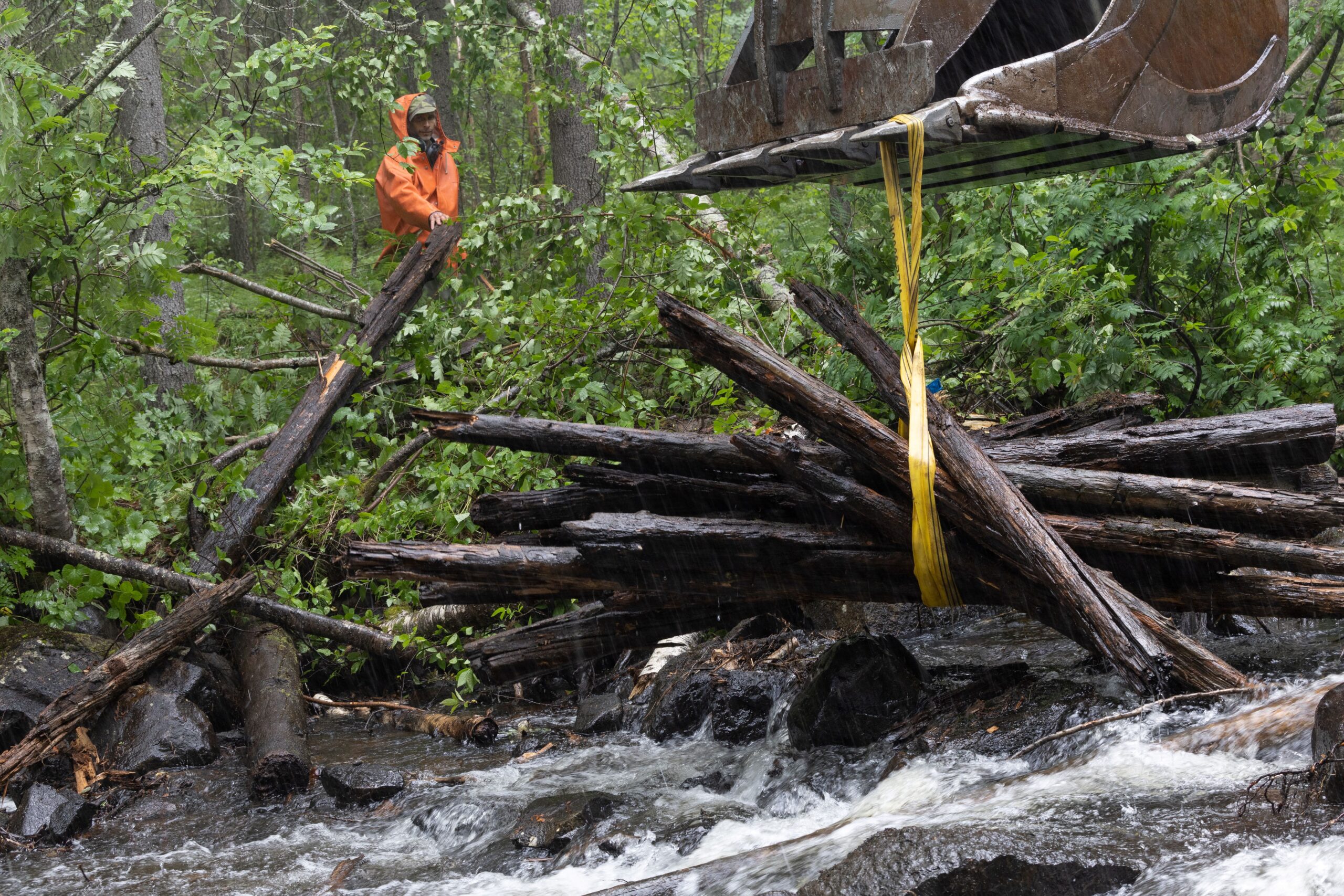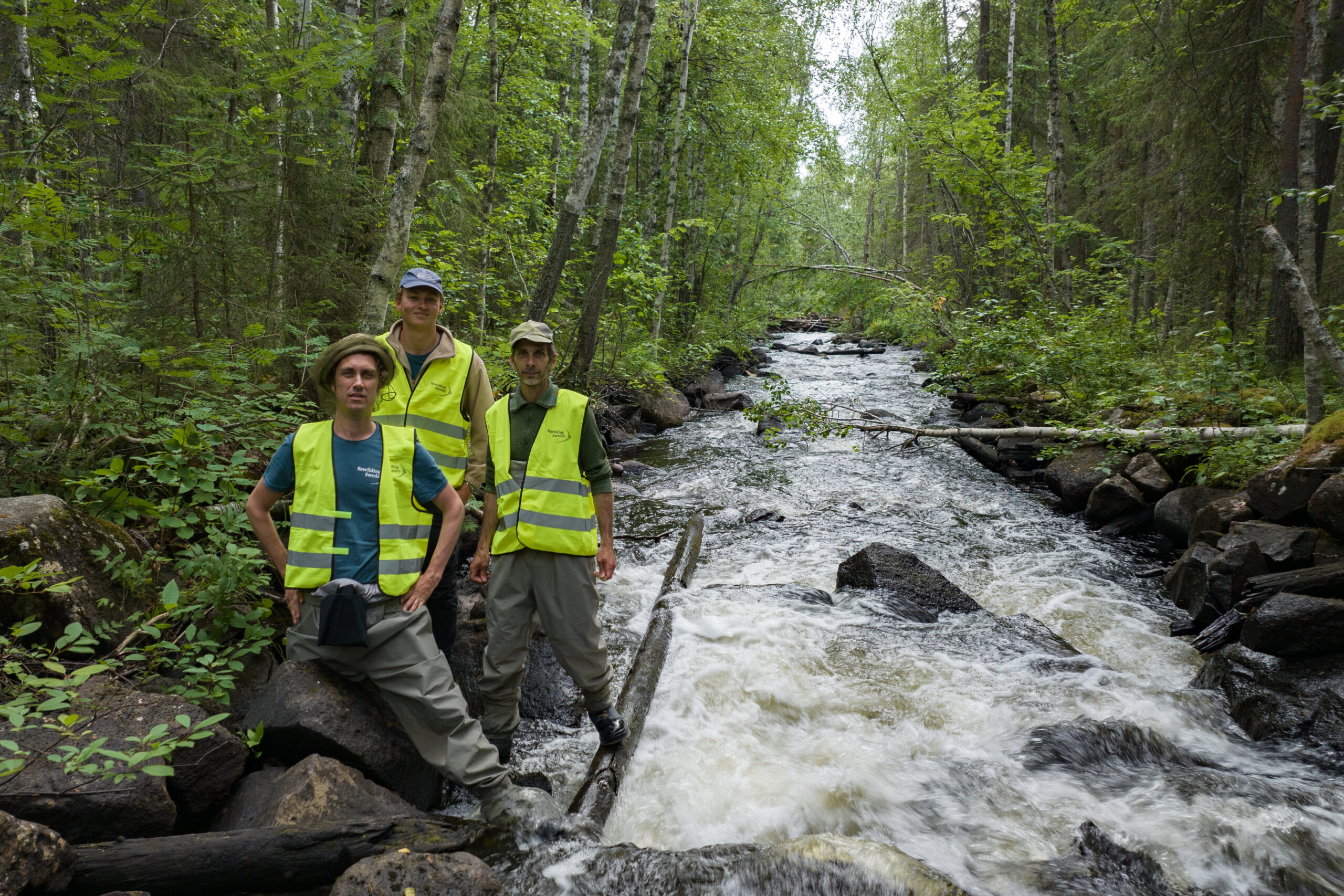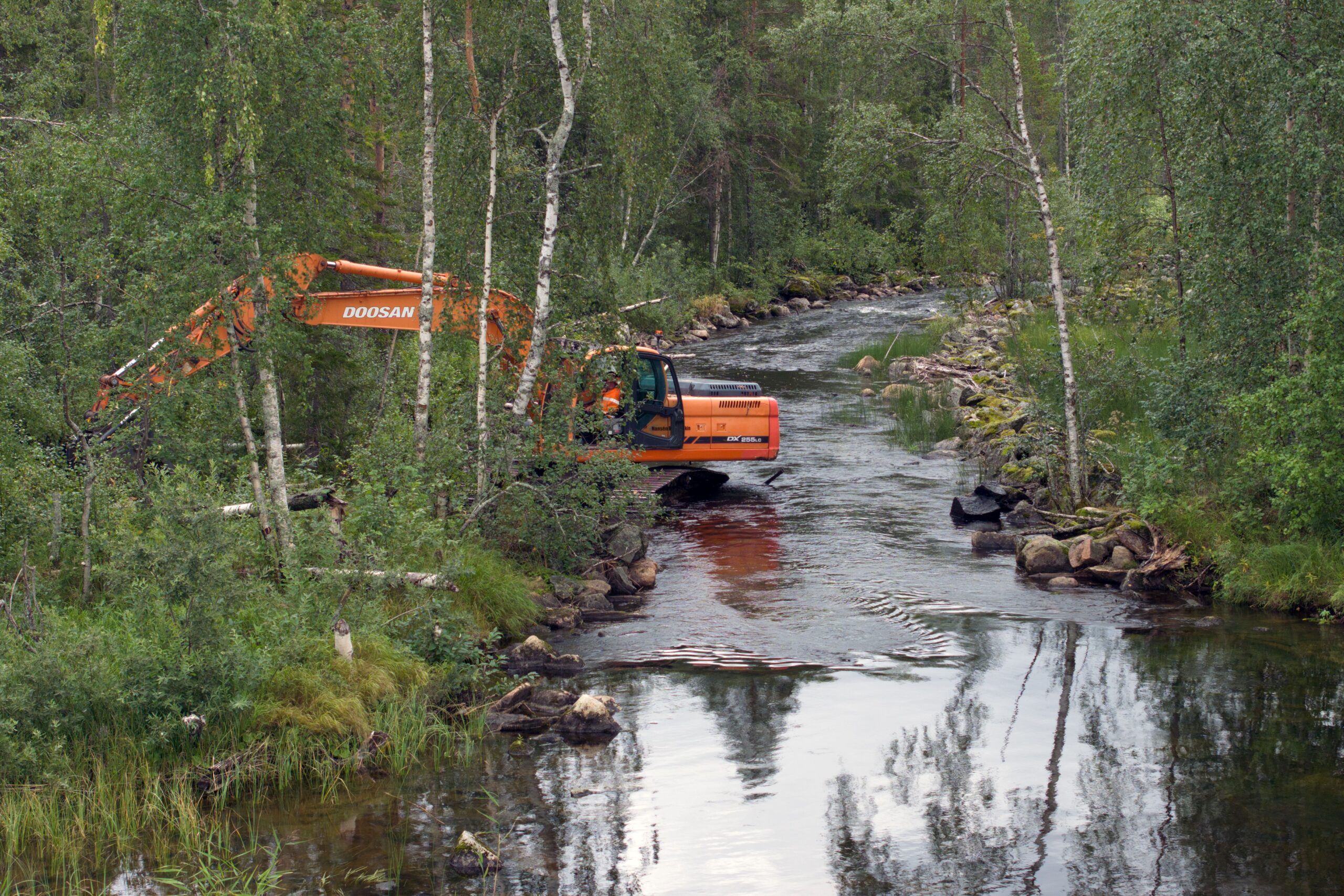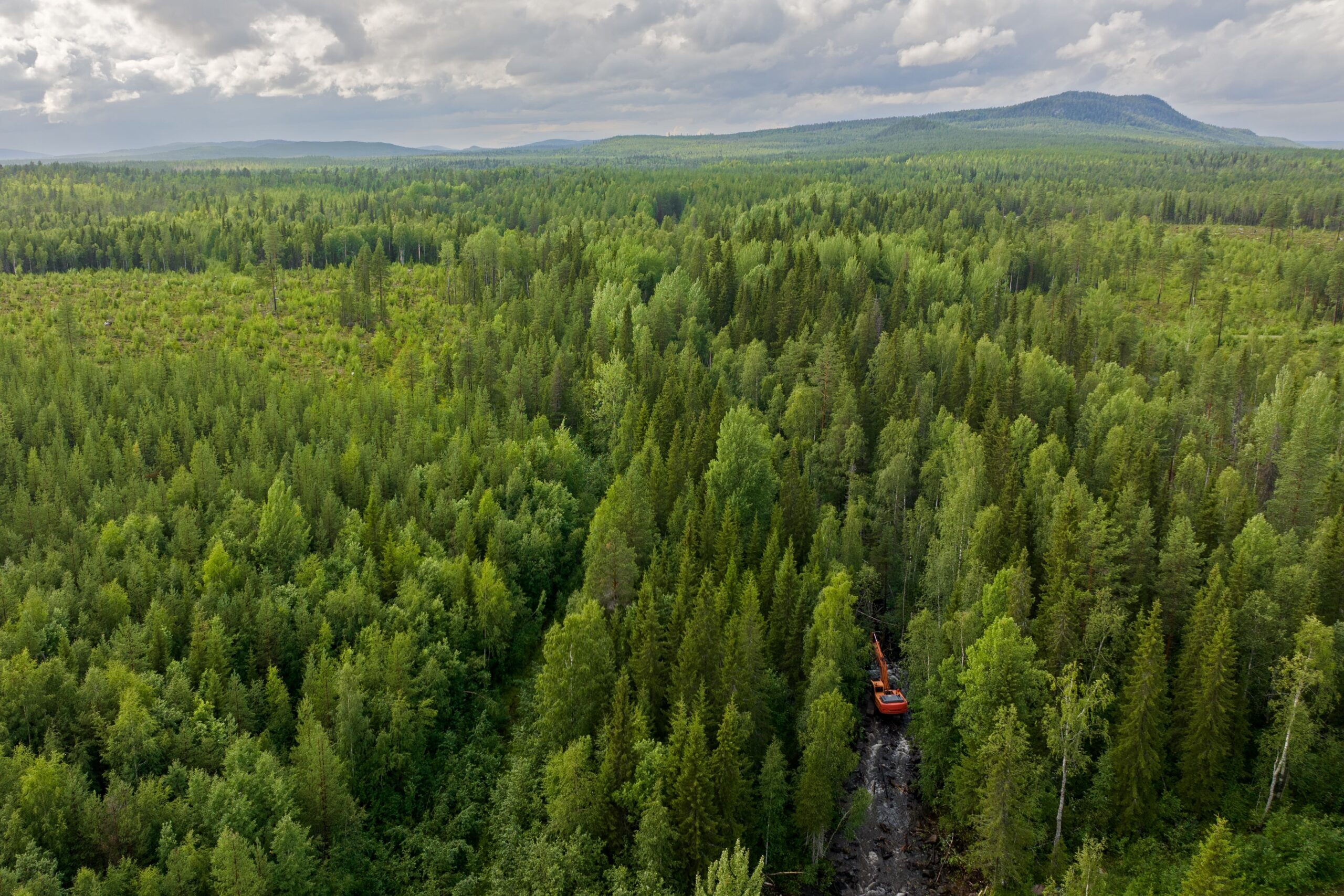Many rivers in Swedish Lapland were extensively reshaped by historical logging activities, negatively impacting the environment on a massive scale. The Rewilding Sweden team are now rewilding a stretch of the Abramsån River, with benefits for biodiversity and local communities.
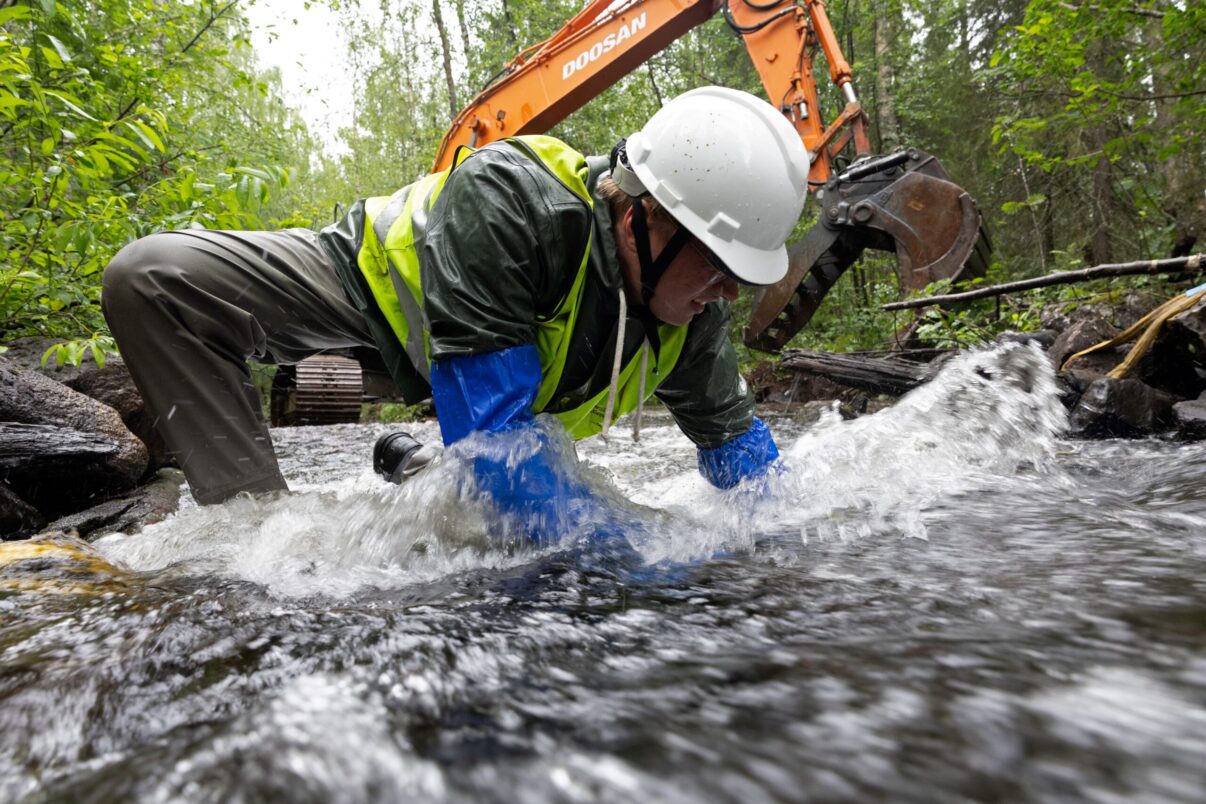
Historical degradation
Rivers are the lifeblood of Swedish Lapland. While many of these rivers have been harnessed for hydroelectricity, those that remain undammed are home to a range of wild fish species, including salmon, sea trout, lamprey, and grayling. Yet even these waterways and their catchment areas have suffered from the long-term impacts of the forestry industry, which means they – and the landscapes of which they are part – could be healthier and far more natural.
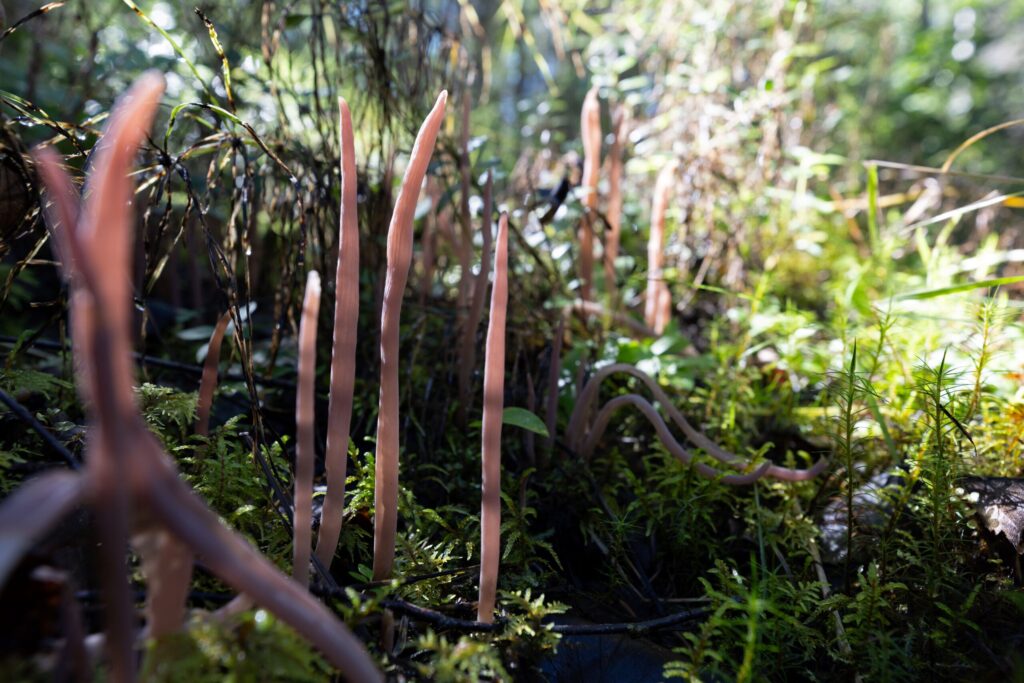
In the past, logging activities saw many riverbeds in Swedish Lapland extensively cleared of rocks and gravel. Rapids were removed and bends straightened to make it easier to float logs hundreds of miles downstream for processing. This channelisation cut many ecological, biogeochemical, and hydrological connections between land and water, negatively impacting plants and animals, and their habitats. It also increased the speed of water flowing in rivers, which affected riverbank and riverbed erosion and reduced the local retention of gravel, sand and organic matter. Unsurprisingly, this saw populations of fish and the diversity of aquatic insects decline sharply.
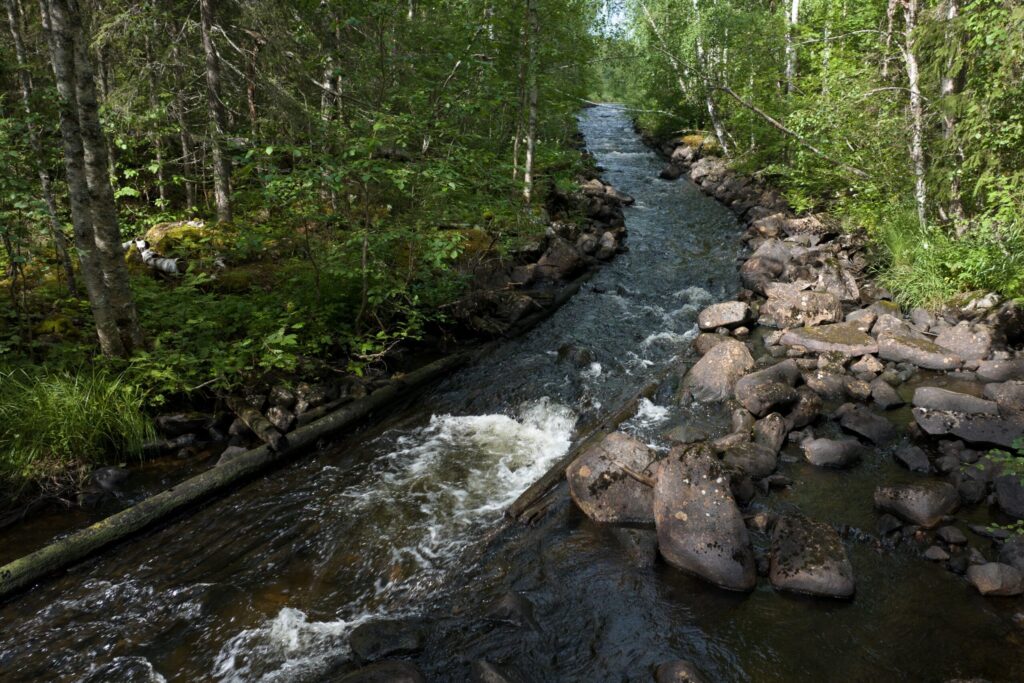
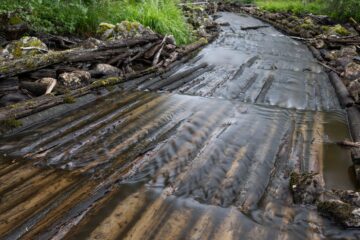
Rebuilding a river
The Abramsån River is a tributary of the 210-kilometre long Råne River – Europe’s longest undammed forest river. It is typical of many waterways in the Swedish
Lapland rewilding landscape severely damaged by historical logging. Not only were large boulders and stones removed from the river bed and piled up at the river’s edge, but a wooden floor was also laid down in parts of the river, made up of individual tree trunks nailed together. This hugely disruptive engineering work was carried out at the start of the twentieth century.
Starting in June, the Rewilding Sweden team – comprising four full-time and two part-time employees – have been working to restore a five-kilometre stretch of the Abramsån. Around two kilometres have now been restored, with work set to finish for the season shortly. Funded by a LOVA (Local Water Preservation) Grant from the Swedish government, the restoration process is a highly technical one, involving a 24-tonne excavator and 10 hours of hard labour a day.
“We’re essentially rebuilding the entire structure of the river,” explains Rewilding Sweden team leader Henrik Persson. “Above and below the wooden flooring, there’s virtually no habitat for fish at all, so we need to build back a framework to enable the river to start functioning again. But we can’t just throw stones randomly in the water – we need to recreate a natural river environment.”
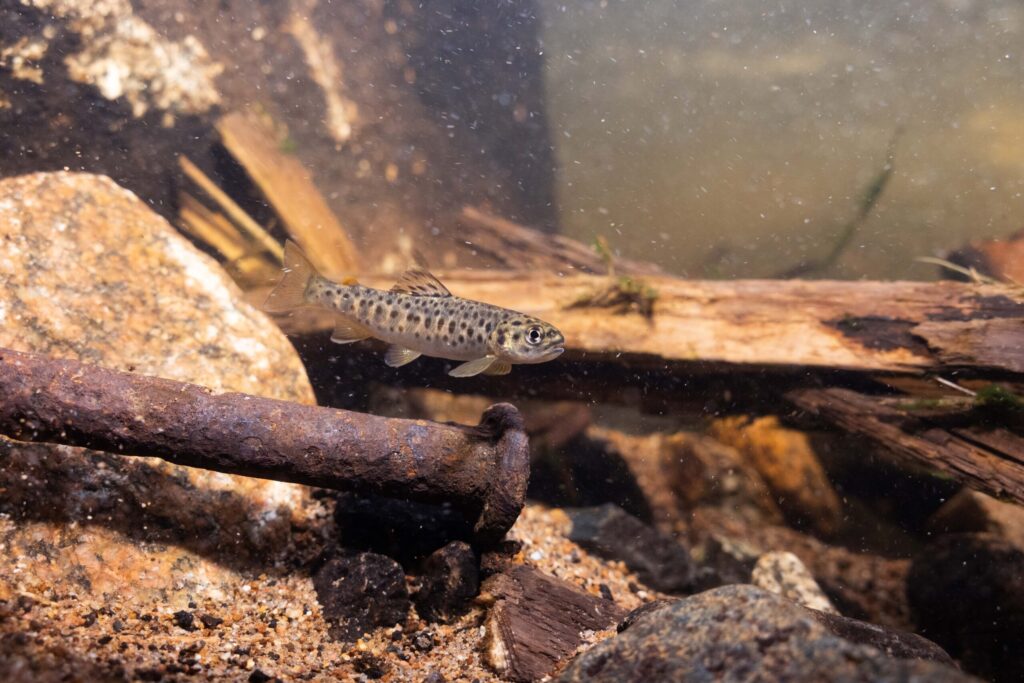
A lengthy process
After obtaining the necessary legal documents – itself a time-consuming process – restoration efforts on the Abramsån began with the temporary removal of all freshwater pearl mussels, a large mollusc species found on the beds of pristine flowing rivers and streams in northern regions. A keystone species that can live for up to 250 years, these mussels can filter up to 50 litres of water a day, improving water quality for other species such as fish, insects and otters. Highly sensitive to environmental change, they also act as an environmental indicator species.
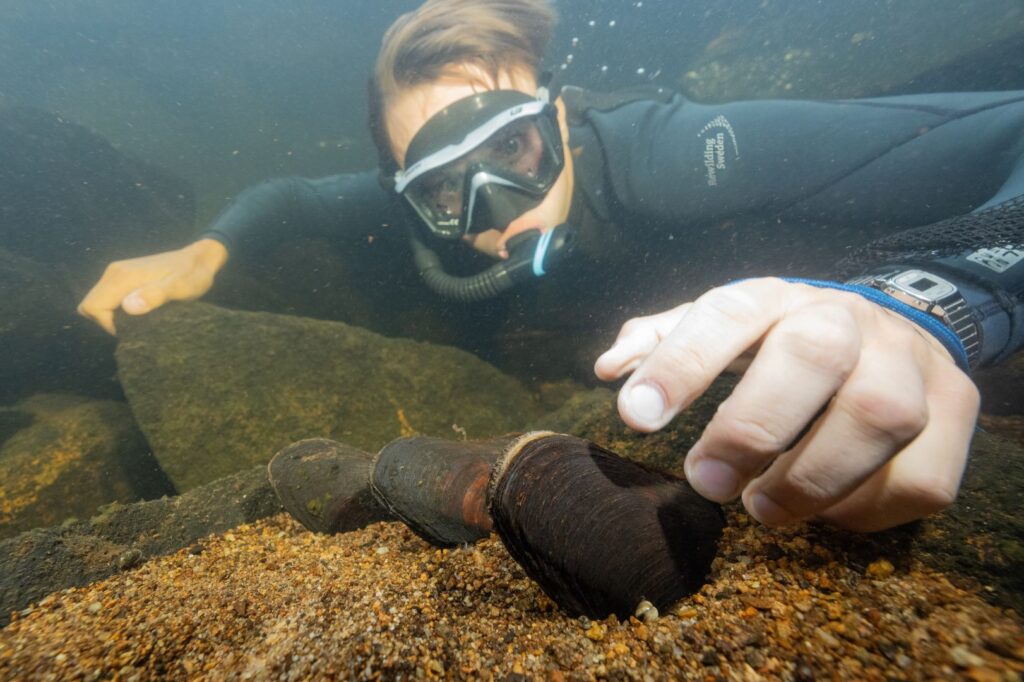
“We snorkelled the stretch of river being restored for a month,” explains Henrik Persson. “Thousands of mussels were collected from the parts between where the wooden floor had been laid down, and moved upstream to a safe place. We’ll return them once the restoration work is complete.”
Following the removal of the mussels, the restoration work could begin in earnest. Using the excavator, sections of the wooden floor were removed by rope. Then stones that had been removed in the past were put back into the water by the excavator, sometimes with human assistance.
“To be honest, we weren’t expecting to find so much wooden flooring, which takes a long time to remove,” says Persson. “On average, we’ve been restoring 22 metres of river a day. The work is tough, but it’s incredibly rewarding to see the river and riverside areas returning to life.”
The bigger picture
The restoration of the Abramsån ties in with Rewilding Sweden’s “waterscape” approach to landscape rewilding, which aims to enhance blue-green corridors for nature and wildlife by restoring hydrological pathways. It encompasses the restoration of degraded waterways, as well as soils and forests in catchment areas.
Natural forests act as sponges, absorbing rainfall, regulating the flow of water into rivers, and replenishing groundwater reserves. As such, the intricate network of vegetation, soil, and hydrological processes within forest ecosystems can help mitigate the impacts of flooding, catastrophic wildfires, and undesirable erosion and sedimentation. But when forests are clear-cut and drained by man-made ditches into channelised rivers, as they are in much of Swedish Lapland, water leaves the landscape far too quickly.
“One of the outcomes of restoring rivers such as the Abramsån, and removing the channelisation, is to increase lateral connectivity between the river and the surrounding forest,” explains Henrik Persson. “This means water stays in the landscape for longer, which has a huge ecological benefit, not only for animals such as insects, birds, and fish, but also for natural grazers such as semi-wild reindeer, which feed on hanging lichens that thrive in moist forest conditions. Local communities also benefit, as there is less flooding downstream in times of heavy rainfall, because the river can perform its function as a natural buffer.”
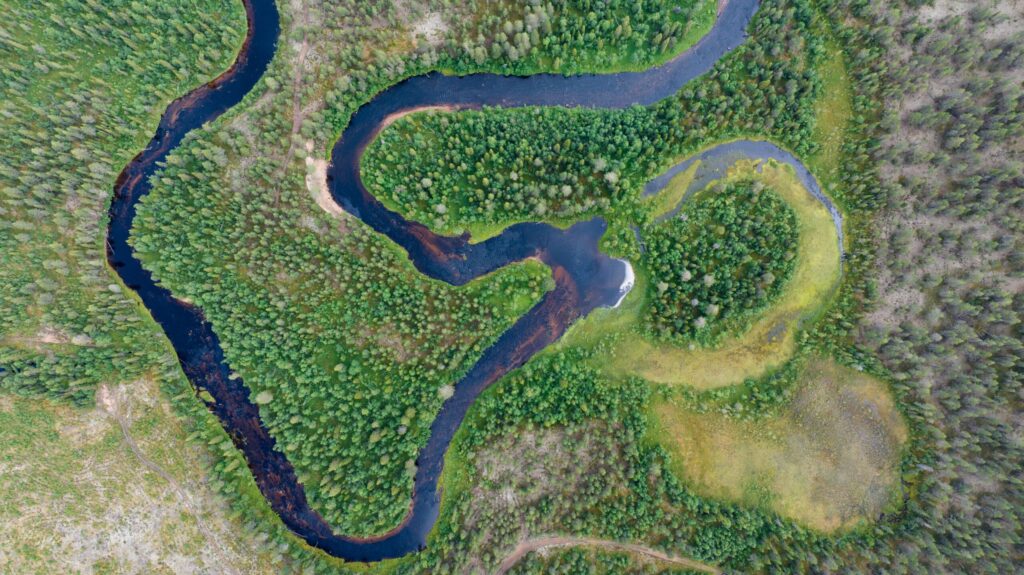
Scaling up
River restoration work on the Abramsån is scheduled to continue, with permits to restore lower sections of the river in the pipeline. This work will most likely kick off in 2025, because of the time needed to obtain the permits. The Rewilding Sweden also have plans to expand the Abramsån work to the 420,000-hectare Råne River catchment, while preparatory legal work for the restoration of a number of additional tributaries is already underway.


